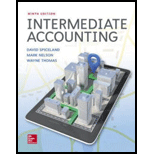
Concept explainers
Judgment Case 9–1
Inventoriable costs; lower of cost or market; retail inventory method
• LO9–1, LO9–3, LO9–4
Hudson Company, which is both a wholesaler and a retailer, purchases its inventories from various suppliers. Additional facts for Hudson’s wholesale operations are as follows:
a. Hudson incurs substantial warehousing costs.
b. Hudson values inventory at the lower of cost or market. Market is below cost of the inventories.
Additional facts for Hudson’s retail operations are as follows:
a. Hudson determines the estimated cost of its ending inventories held for sale at retail using the conventional retail inventory method, which approximates lower of average cost or market.
b. Hudson incurs substantial freight-in costs.
c. Hudson has net markups and net markdowns.
Required:
1. Theoretically, how should Hudson account for the warehousing costs related to its wholesale inventories? Why?
2.
a. In general, why is inventory valued at the lower of cost or market?
b. At which amount should Hudson’s wholesale inventories be reported in the
3. In the calculation of the cost-to-retail percentage used to determine the estimated cost of its ending retail inventories, how should Hudson treat
a. Freight-in costs?
b. Net markups?
c. Net markdowns?
4. Why does Hudson’s retail inventory method approximate lower of average cost or market?
Want to see the full answer?
Check out a sample textbook solution
Chapter 9 Solutions
Intermediate Accounting
- Can you solve this general accounting problem with appropriate steps and explanations?arrow_forwardPlease explain the correct approach for solving this general accounting question.arrow_forwardI am trying to find the accurate solution to this financial accounting problem with appropriate explanations.arrow_forward
- I need help finding the correct solution to this financial accounting problem with valid methods.arrow_forwardCan you help me solve this general accounting problem with the correct methodology?arrow_forwardI need help with this financial accounting problem using proper accounting guidelines.arrow_forward
- Please provide the solution to this general accounting question using proper accounting principles.arrow_forwardI need help finding the accurate solution to this general accounting problem with valid methods.arrow_forwardWhen incorporating his sole proprietorship, Joe transfers all of its assets and liabilities. Included in the $30,000 of liabilities assumed by the corporation is $500 that relates to a personal expenditure. Under these circumstances, the entire $30,000 will be treated as boot. / Provide explanation please a. True b. Falsearrow_forward
- In determining whether § 357(c) applies, assess whether the liabilities involved exceed the bases of all assets a shareholder transfers to the corporation./ Provide explanation please. a. True b. Falsearrow_forwardI will unhelpful if wrong.arrow_forwardplease don't solve using wrong values i will mark as unhelpful.arrow_forward
 Individual Income TaxesAccountingISBN:9780357109731Author:HoffmanPublisher:CENGAGE LEARNING - CONSIGNMENT
Individual Income TaxesAccountingISBN:9780357109731Author:HoffmanPublisher:CENGAGE LEARNING - CONSIGNMENT Intermediate Accounting: Reporting And AnalysisAccountingISBN:9781337788281Author:James M. Wahlen, Jefferson P. Jones, Donald PagachPublisher:Cengage Learning
Intermediate Accounting: Reporting And AnalysisAccountingISBN:9781337788281Author:James M. Wahlen, Jefferson P. Jones, Donald PagachPublisher:Cengage Learning

